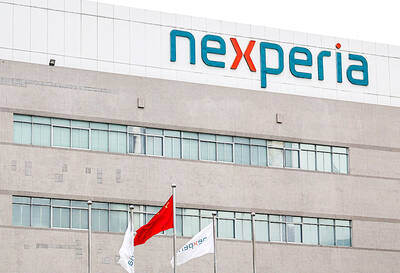Chi Mei Optoelectronics Corp (奇美電子), the nation’s second-largest liquid-crystal-display (LCD) panel maker, yesterday said it had no plans to shut down factories to lower production amid industrial the slump.
The announcement was meant to dispel speculation that Taiwanese LCD panel makers may be considering drastic measures to survive the latest downturn.
This followed a trimming of output by around 20 percent last quarter after panel prices collapsed on contracting demand in September.
“We currently do not have any plan [to close factories] as reported by the media,” Chi Mei said in a filing to the Taiwan Stock Exchange, dismissing a report by the Chinese-language newspaper the Economic Daily News.
Chi Mei and smaller rival Chunghwa Picture Tubes Ltd (中華映管) were considering suspending two less-advanced plants to cut output and save costs, the report said.
Chi Mei, however, said that shrinking demand had caused a decline in factory production and employee working hours. It has also encouraged employees to take unpaid vacations.
Last month, the Tainan-based company said utilization of the existing seven factories may drop to between 60 percent to 70 percent on average and from 80 percent in the third quarter.
Chunghwa Picture also said it had no plan to shut down any factories; instead the company was reducing factory utilization as part of aggressive cost-saving efforts, a company statement filed to the Taiwan Stock Exchange said.
Chunghwa Picture and Chi Mei posted total losses of NT$10.27 billion (US$307 million) for the July-to-September period as prices plunged.
With no clear signs of a recovery in demand, prices for LCD panels used in computers and televisions were expected to slide further this month across the board, a report released yesterday by Austin, Texas-based market researcher DisplaySearch said.
The price of a benchmark 19-inch wide-format LCD panel for PC monitors may decrease by 4.3 percent to US$67 in the second half of this month from two weeks ago, while a 32-inch LCD TV panel may plunge nearly 9 percent to US$205 during the same period, the researcher said.
“Panel makers are operating with losses, and some of them are still struggling with inventory issues and are dumping the [PC monitor] panels at very low prices as they are desperate for cash,” DisplaySearch said in the report.
To repay short-term debt and raise more working capital, the Chi Mei board yesterday approved the proposed NT$4 billion fund-raising plan. Chi Mei plans to raise the fund by issuing corporate bonds at home.
Besides, the board also gave the go-ahead to a share buyback plan yesterday. Chi Mei plans to repurchase 600 million common shares, or about 6.81 percent of overall capital shares issued, during the two-month period starting today.
The panel maker plans to buy back shares at prices ranging from NT$6.6 and NT$20.55 each, Chi Mei said in a filing submitted to the Taiwan Stock Exchange.
Shares of Chi Mei fell 5.85 percent to NT$8.21 yesterday, under-performing the benchmark TAIEX, which lost 4.53 percent.
Chunghwa Picture and the nation’s biggest LCD panel maker AU Optronics Corp (友達光電) dropped 6.84 percent and 4.64 percent, respectively, yesterday.

JITTERS: Nexperia has a 20 percent market share for chips powering simpler features such as window controls, and changing supply chains could take years European carmakers are looking into ways to scratch components made with parts from China, spooked by deepening geopolitical spats playing out through chipmaker Nexperia BV and Beijing’s export controls on rare earths. To protect operations from trade ructions, several automakers are pushing major suppliers to find permanent alternatives to Chinese semiconductors, people familiar with the matter said. The industry is considering broader changes to its supply chain to adapt to shifting geopolitics, Europe’s main suppliers lobby CLEPA head Matthias Zink said. “We had some indications already — questions like: ‘How can you supply me without this dependency on China?’” Zink, who also

Taiwan Semiconductor Manufacturing Co (TSMC, 台積電) received about NT$147 billion (US$4.71 billion) in subsidies from the US, Japanese, German and Chinese governments over the past two years for its global expansion. Financial data compiled by the world’s largest contract chipmaker showed the company secured NT$4.77 billion in subsidies from the governments in the third quarter, bringing the total for the first three quarters of the year to about NT$71.9 billion. Along with the NT$75.16 billion in financial aid TSMC received last year, the chipmaker obtained NT$147 billion in subsidies in almost two years, the data showed. The subsidies received by its subsidiaries —

At least US$50 million for the freedom of an Emirati sheikh: That is the king’s ransom paid two weeks ago to militants linked to al-Qaeda who are pushing to topple the Malian government and impose Islamic law. Alongside a crippling fuel blockade, the Group for the Support of Islam and Muslims (JNIM) has made kidnapping wealthy foreigners for a ransom a pillar of its strategy of “economic jihad.” Its goal: Oust the junta, which has struggled to contain Mali’s decade-long insurgency since taking power following back-to-back coups in 2020 and 2021, by scaring away investors and paralyzing the west African country’s economy.

RE100 INITIATIVE: Exporters need sufficient supplies of renewable energy to meet their global commitments and remain competitive, the economics ministry said Local export-oriented manufacturers, including Taiwan Semiconductor Manufacturing Co (台積電), require sufficient supplies of green energy to maintain their competitiveness and regulations already ensure that renewable energy development adheres to environmental protection principles, the Ministry of Economic Affairs said yesterday, as the legislature imposed further restrictions on solar panel installations. The opposition-led Legislative Yuan yesterday passed third readings to proposed amendments to three acts — the Environmental Impact Assessment Act (環境影響評估法), the Act for the Development of Tourism (發展觀光條例) and the Geology Act (地質法) — which would largely prohibit the construction of solar panels in some areas. The amendments stipulate that ground-mounted solar